The best ideas might happen over a pint down at your local, but this one happened somewhere near the top of a large hill in Yorkshire.
Attempting the Yorkshire Three Peaks with a friend, Nathan, I idly mentioned that I’d been considering taking my daily driver – a 2011 Smart Fortwo, and a diesel one at that – to the Nürburgring to do a few laps.

Nathan’s eyes lit up. “I’ve been thinking about doing the same!” His car? A 2004 Suzuki Wagon R. You know the ones, tall, boxy, often indicate right before turning left. Nathan’s was a kind of camper conversion, and he’d slept in it the night before we climbed some hills. Two more inappropriate vehicles you’re unlikely to find on the ‘Ring. Which made them perfect.
Needless to say, we won’t be the first, or the last, to attempt such antics in apparently unsuitable cars. Back in the days when Grand Prix drivers would socialise with one another, they’d often play hire-car roulette and have more fun discussing a cross-country thrash or motorway slipstreaming contest than they would going over any race performance.
Fast-forward three-and-a-bit months and our two dobbins are parked alongside each other at the Eurotunnel duty free, ready for a 300-ish mile dash through France, Belgium and Germany, to the town of Nürburg and its fearsome ring-road.
Our route nipped by Spa-Francorchamps, and a quick drive on some of the roads that used to make up the old circuit. It’s as fascinating in its own way as the ‘Ring, though unlike the German track, it’s easy to forget you’re on an old circuit when traversing the old Burnenville or Stavelot corners, since you’re doing so at nice, cosy, road-legal speeds.
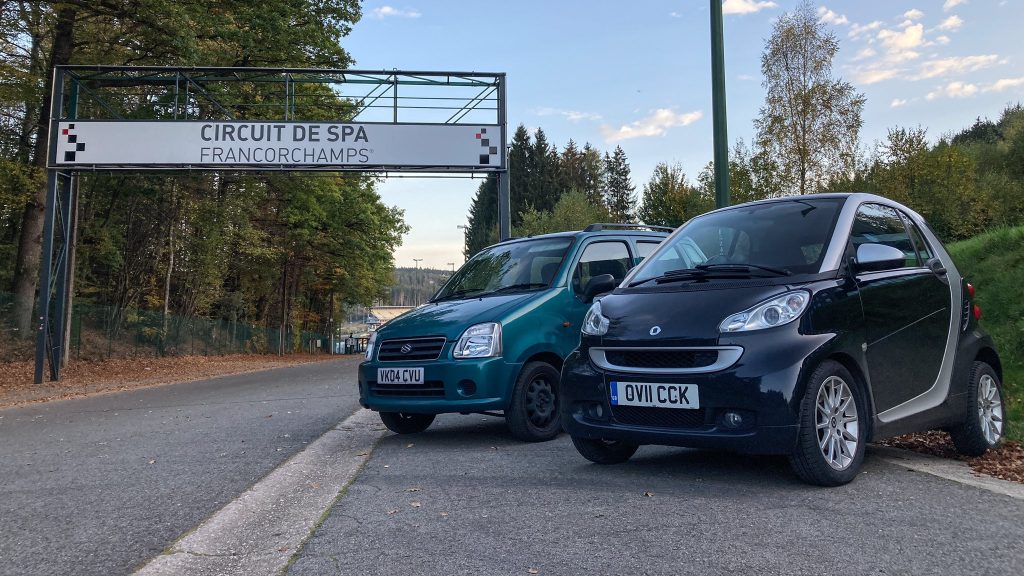
When you then realise how quickly old F1 cars would take those turns – possibly 100mph quicker in some cases, and on the limit of grip – it’s enough to send a shiver down the spine. Even our imaginations struggled with the Masta Kink though, which is currently being resurfaced, so feels more like a building site than one of the world’s most terrifying sequences of turns.
Near the end of the season, and on track relatively early the next day, our first lap was one of discovery; discovery of lines, of the parts of the circuit still damp from recent showers, and of just how quickly a 518bhp GT3 RS or 577bhp AMG GT-R Pro approaches a 54bhp diesel Smart and a 74bhp Wagon R.
Actually, the early slot meant mercifully little in our mirrors. We’d discovered on the way to Germany that the Smart had the stronger engine for hills, and the ‘Ring has plenty of those, so Nathan went ahead and we agreed that I’d scoot past once the Smart’s mighty three-espresso-cup torque output could no longer be constrained by the ‘Zooki and its four-thimble naturally-aspirated petrol.
Everyone who visits the Nürburgring Nordschleife says the same thing: nothing can really prepare you for the elevation. The same is true of any track, really – the first time you drive or walk the run up to Casino Square at Monaco you realise how steep that circuit is – but at the ‘Ring it applies to everything. Even the kerbs look twice as vicious as they do in YouTube videos or in videogames, the corners feel tighter, and when you finally get to a proper hill, be it down or up, it feels like you’re driving along a graph of the UK’s GDP.
The Smart, nominally limited to mid-80s mph, was showing just shy of 100 on two separate occasions per lap, before the fast left-hander at Schwedenkreuz, and then just a corner later on the run down Adenauer-Forst.
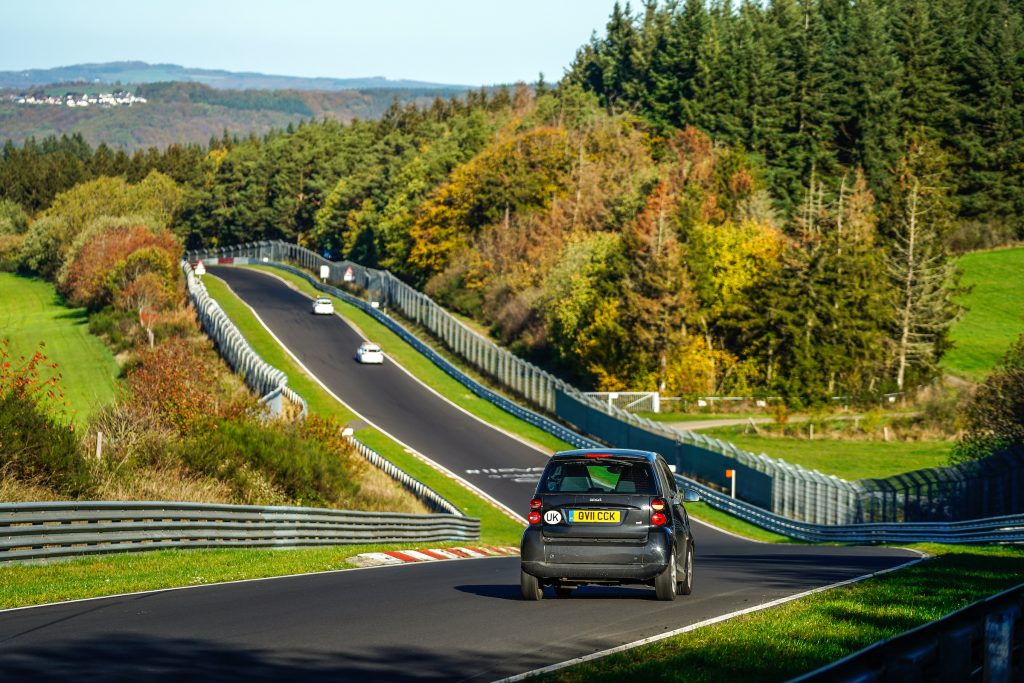
And then, rounding the right-hander of Bergwerk, I finally sprinted… well, jogged… well, strolled past the Suzuki, reaching roughly 80mph before gravity began clawing at the city car’s modest mass and the speedometer needle crept back down as the hill rose up. Fourth gear was enough to hold the car at 70-ish, but this was perhaps the section where the right-hand indicator and eyes-on-stalks were required the most, as the really brisk stuff seems to gain speed for the entire climb, and is already faster at the bottom than we’re doing at the top.
Then, it’s the Karussell. Neither of us were quite sure whether we’d attempt it – partly because staying wide lets faster traffic past, but partly because we weren’t entirely sure how tall, narrow cars would react when dropped into a heavily banked and incredibly bumpy turn.
Reacting to nothing in particular – maybe the devil on my shoulder whispering “it’ll be fine”, I decided at more or less the last second to give it a go, and the ground momentarily dropped from underneath me. The Smart’s over-eager ESP quickly grabbed at a brake or two, but the car was still very much on all four wheels, pressed firmly into the concrete by the neck-straining 17-degree camber.
Nathan, witnessing this last-second change of heart/brush with insanity, decided he was also game, so both of us rumbled around, our cars going through a tumble-dry their makers almost certainly had never considered.
Then it’s another hill, up to Hohe Acht, and perhaps the most entertaining section of the circuit, four kilometres of almost constant turns and elevation changes. The Smart’s ESP again called time on a few corners here, not grabbing brakes but certainly cutting my limited power.
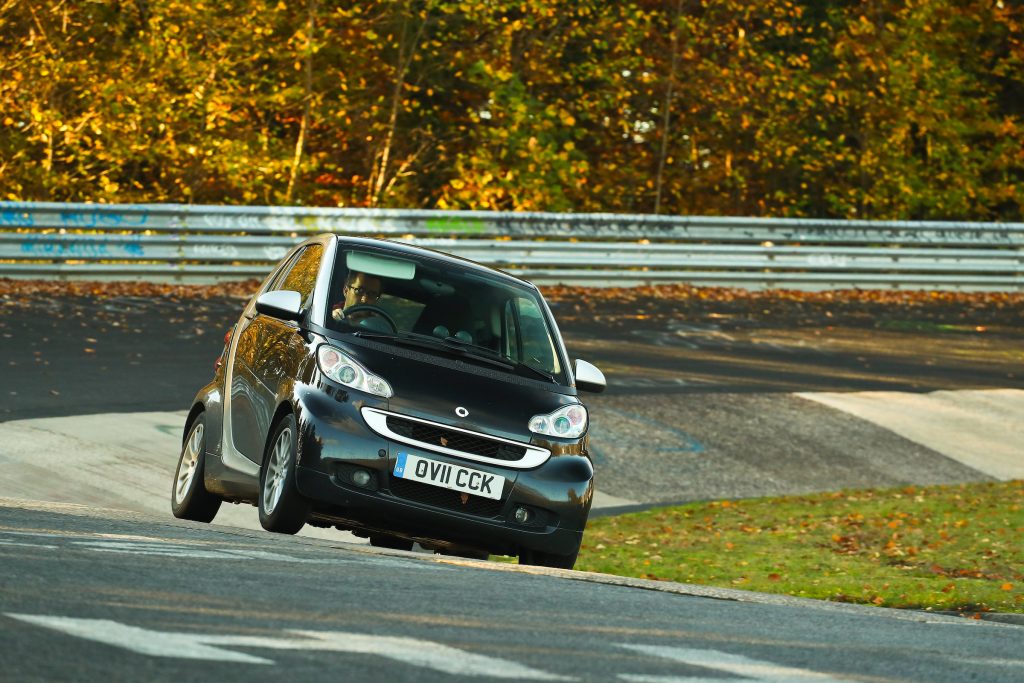
But frankly, I didn’t care: this was fabulous. I still had enough acceleration to make certain parts of the circuit quite interesting and to require use of the Smart’s old-911-style floor-hinged brake pedal. The oft-derided paddleshift actually changes smartly enough to be useful (and meant one fewer thing to think about during this ridiculous venture), and despite running skinny 155-section winter tyres at the front (and 175 winters at the back, with the Smart’s staggered setup), there was still enough grip to get around at a decent pace.
With no assistance and little weight over the front wheels, I’d even go as far as saying it was genuinely pleasant to steer the Fortwo around at speed. Perhaps a little too light in a few places to be really confident (at 90+ in a city car, a little more weight would be reassuring), but when loaded up, there was proper feedback through the rim. The Fortwo’s a driver’s car; who knew?
The Suzuki, maybe not so much. Back in the car park across the road, the Wagon R – even taller than the Smart, heavier, and without so many safety systems – had apparently been an unintentional thrill-ride on a few occasions. Nathan quickly steeled himself for another go however, while I reset the trip to get a handle on a few Smart-at-the-Ring statistics.
Unscientifically timing things, Nathan reckons both cars were getting a ‘bridge to gantry’ lap time in the 12-minute range. That, I reckon, really isn’t bad for this pair of cars.
But with some wiggle room for not being exactly bridge to gantry (more like far-side car park to Devil’s Diner car park, and the low-speed trundling into and out of each), an average speed of more than 50mph also seems surprising for a car that officially won’t even reach 90.
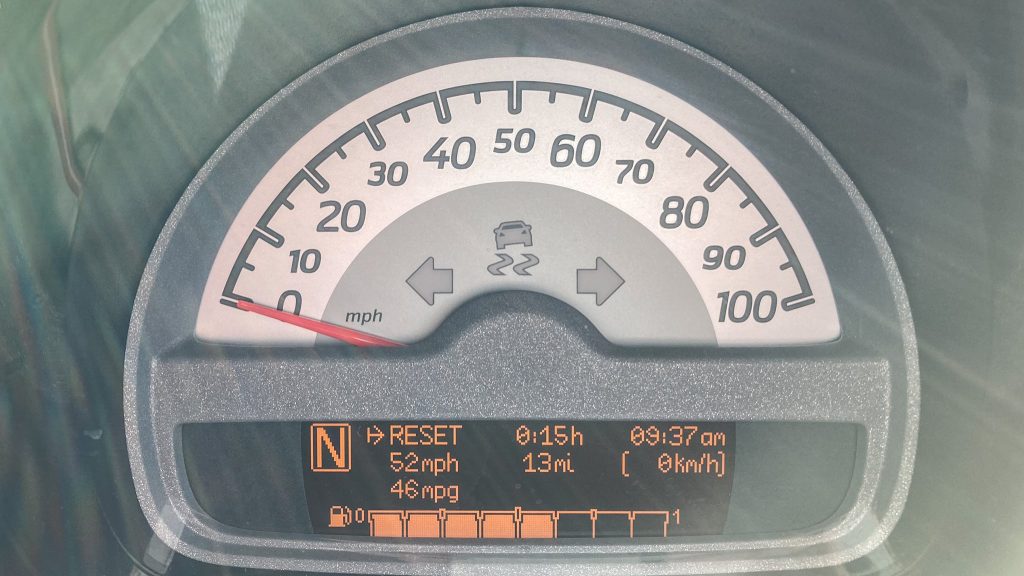
An average economy figure of 46mpg even more so. A city car, driven flat out on one of the world’s longest and steepest circuits for a dozen-or-so minutes, uses less fuel than a lot of people do on their commutes. With again some fudging for the bits either side of the bridge and gantry and trip computer inaccuracy, that number is still in the 40s, or about what my 106 Rallye will do just sort of pootling around.
There was certainly more traffic on the second lap though. Partly, you can interpret this in that we both could have gone even quicker, without having to go off-line every other corner to let a caged E36 BMW past. But also, it added an extra element of concentration that makes the ‘Ring even more challenging: scanning your mirrors like a slow-car-driving hawk. See a car, any car, and it’s indicator-on instantly and keep to the right. The sooner you do it, the sooner everyone knows they’ve seen each other, and the eventual enormous speed delta won’t be quite so scary for those involved.
With a break for lunch, we took one more lap in the mid-afternoon, reasoning that three laps total would be plenty to avoid making the cars unhappy. I’d been tempted to sneakily time this one somehow (you shouldn’t, but almost inevitably people do), but was glad I didn’t bother when around Kallenhard the yellows came out, and a couple of corners later we encountered a rather sorry-looking Golf estate alongside the armco – a reminder, in an otherwise incident-free day, that this circuit still bites back.
In some ways, this made the Smart and Suzuki the perfect tools for the job. No, neither was particularly competent in the greater scheme of things, and it would likely get quite old spending every waking moment on track scanning your mirrors and burning out your indicator bulbs.
But with modest speed, low limits and a healthy dose of respect for both the cars’ limited abilities and the circuit’s potential for calamity, an idea dreamt most of the way up a mountain turned into one of the best automotive experiences I’ve had in some time. If you’re currently staring out the window at your unremarkable commuter car, perhaps now is the time to start scanning next year’s Touristenfahrten dates…
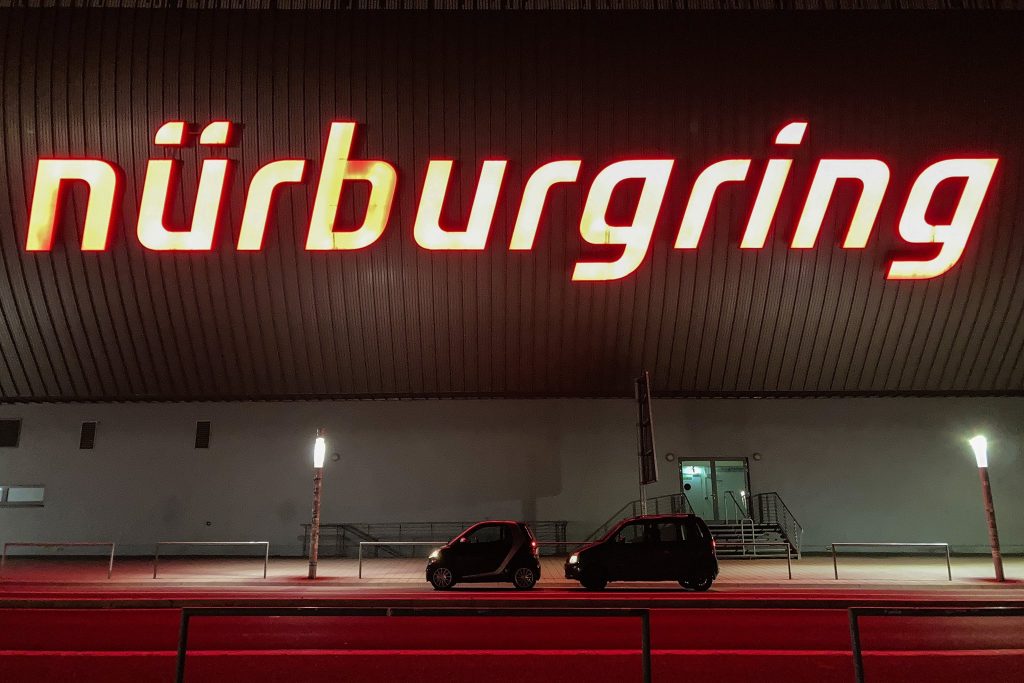
How to visit the Nürburgring yourself
1 Visit the Nurburgring Tourist Drives website to see when the track is next open to the public. As of the time of writing there are just two more days in the 2022 season, on the 12-13 November, while the 2023 season dates haven’t yet been confirmed. But this is where you’ll see ‘em.
2 Book some way of getting there. We used the Eurotunnel, which is quick and relatively affordable, and does discounts for return periods of under five days, which is ideal for a three day out-drive-back schedule.
3 Find a place to stay. If you’re not (unwisely) attempting the whole trip in a single day, you’ll want to stay near to the circuit. We opted for the Ring Inn in Nürburg itself, at under £150 for two rooms for two nights. It was a short walk from the castle for a spot of non-car sightseeing, a short walk from the famous Pistenklause restaurant where we ate both nights, and a short drive to the circuit entrance.
4 Pay for your laps, somehow. The easy but more expensive way is to rock up at the ticket office across the road, and pay 30 Euros per lap on the day. This is the method we chose, for expediency. The more complicated but ultimately cheaper route is to set up an account on the Nürburgring website which lets you fill your account with GHC (“Green Hell Credits”) which let you lap at a discounted rate. You then use a QR code to access the circuit, and the website neatly tracks how many laps you’ve done.
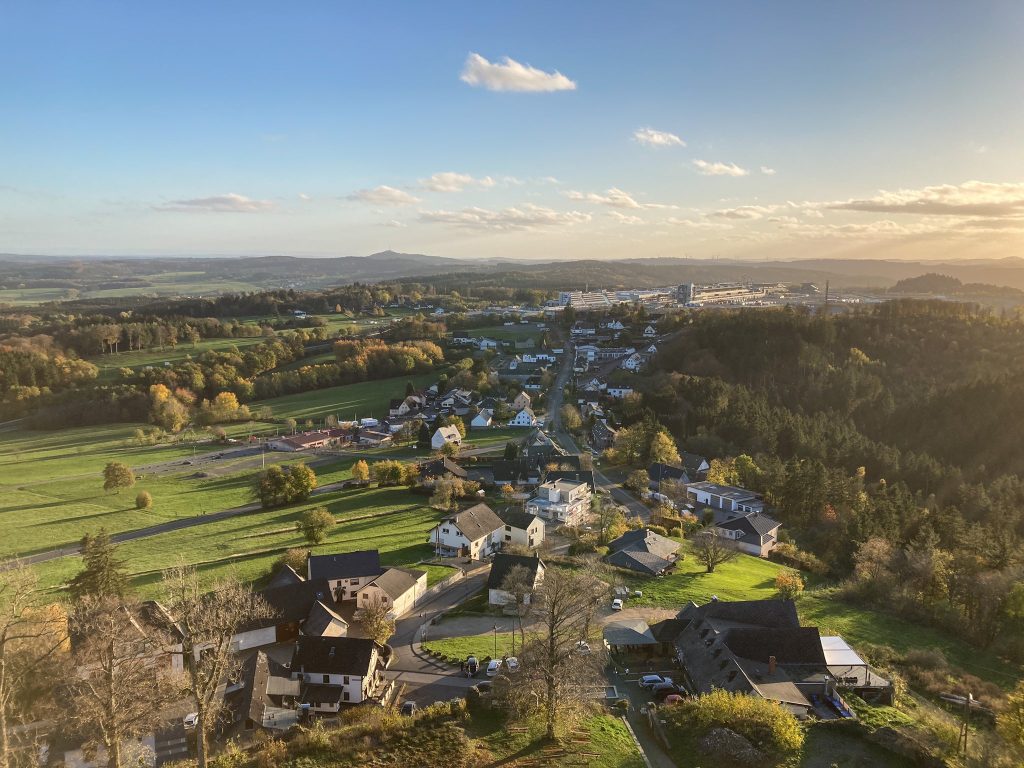
5 Go easy, because the ease by which you can do all this can lull you into a false sense of security. This is still a track, and while you don’t require a helmet, it needs to be treated with respect. Your car needs to be in very good condition, not just because it’ll be safer, but because hitting the barrier isn’t the only thing the track will charge you for: if you dump oil and a bunch of cars spin off and crash, your bank account will have an even worse day than any repairs to your own car.
6 Which brings me onto insurance: you can get it, but it’s very expensive (given the high risk) and your conventional insurance is unlikely to be valid because of the ‘Ring’s reputation. So basically drive like you’re effectively covered only third-party.
7 This is more philosophical than the other points, but support the local economy. For a start, don’t drive like a dick, either on track or off it – respect the locals, and treat the entire venture as a precious resource that could be taken away if misused. But also, treat everything else in the area as “use it or lose it” too: these are difficult times for everyone, and whether it’s the hotels, the castle, the restaurants, the track car hire places, the brilliant model shop at the petrol station alongside the Döttinger Höhe, or just the track itself, every Euro you spend will help to keep this good thing going for many years to come.
Read more
Six reasons the “brilliantly bonkers” Nürburgring 24 Hours is like no other race
Nürburgring honours Sabine Schmitz with corner name
Five reasons to avoid the autoroute on your next French road trip







